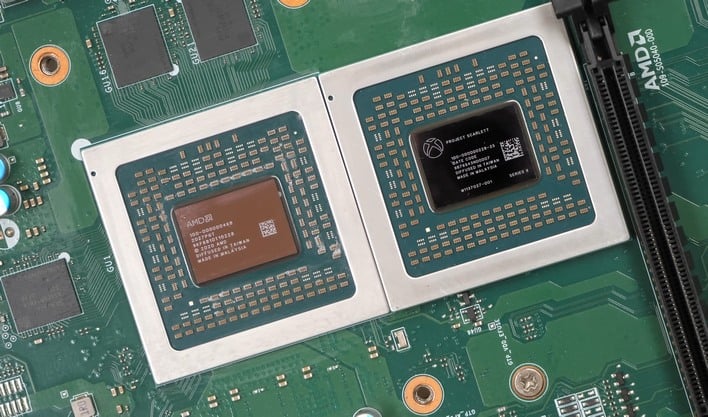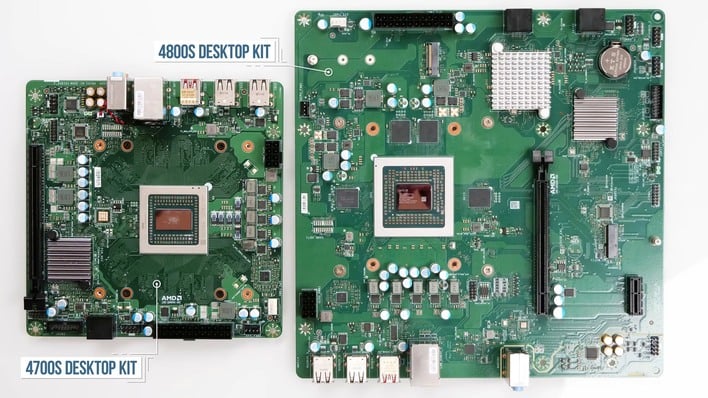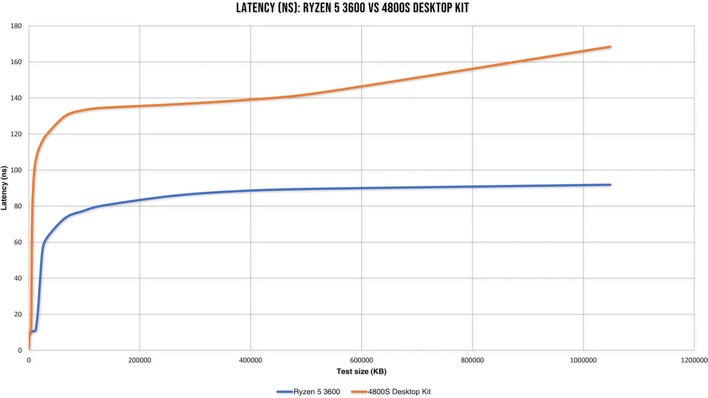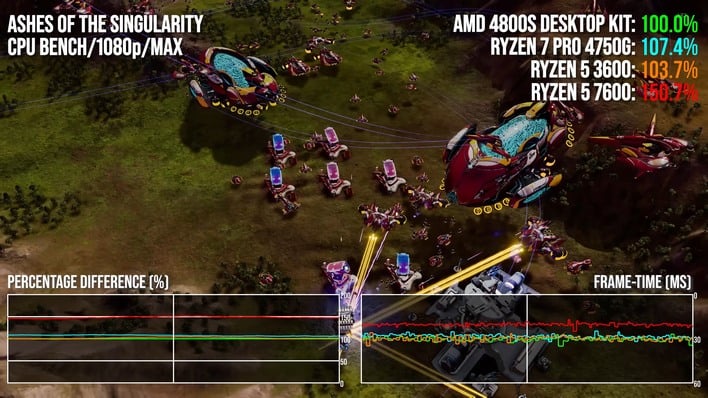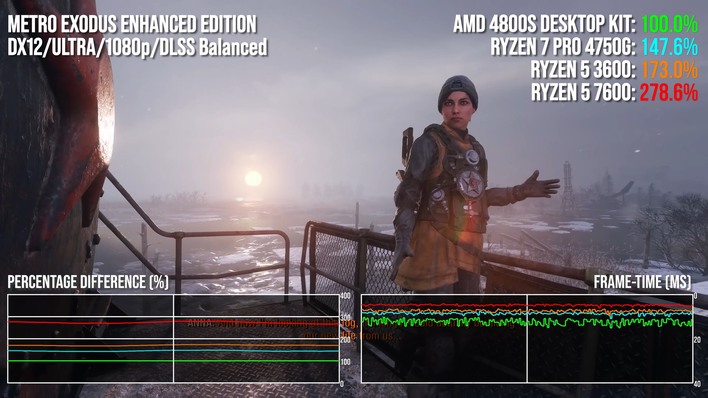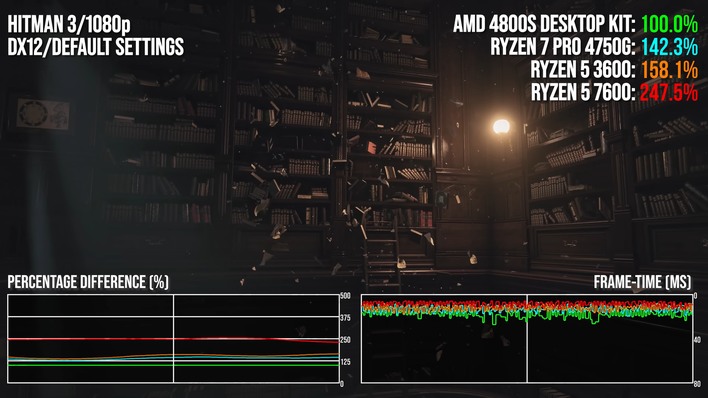AMD 4800S Desktop Kit Repurposed From Xbox Series X Gets Benchmarked In Games
The Xbox and PlayStation consoles have been using broadly PC-compatible hardware for the last two generations. The previous-generation hardware was really too slow to be interesting with its meager Jaguar cores, but the current-generation systems are based on AMD's Zen 2 architecture. That's certainly older and slower compared to recent PC hardware, but it still gets the job done in the Steam Deck, too.
AMD's done this before, with the 4700S Desktop Kit, but that board was underwhelming. Sure, you got an eight-core Zen 2 processor—based on busted PS5 chips—but it was extremely limited in its I/O. You got just two SATA ports, and a PCIe 2.0 x4 link for the graphics card, with no other PCIe expansion available. That means no M.2 sockets, and the crappy PCIe link means drastically degraded GPU performance for modern cards.
How dire? Sometimes to the tune of 40% worse than a Ryzen 7 4750G, a Zen 2-based APU. That chip uses regular old DDR4 memory with its low latency, but it's slightly hamstrung by losing half of its L3 cache compared to standard desktop Ryzen 3000 processors. In testing over at Digital Foundry, benchmark addict Rich Leadbetter put the AMD 4800S through its paces and it came away largely looking rather poor.

We won't reproduce the whole video here; Digital Foundry does good work and Leadbetter has some interesting insights to offer on his data. If you've already read this whole post and are still curious, definitely head over to YouTube to stream the whole review, as it is well-put-together and worth the watch.
The semi-custom processors used in the game consoles are massive chips on which the eight CPU cores and their associated cache are a tiny fraction of the overall die. Most of the chip is occupied by an enormous integrated GPU and its required 256-bit GDDR6 interface. Given how much of the die area it takes up, there are likely a fair few dice that have eight working CPU cores yet a non-functional GPU. What to do with them? Sell them as PC processors exclusively in China, apparently.
AMD's done this before, with the 4700S Desktop Kit, but that board was underwhelming. Sure, you got an eight-core Zen 2 processor—based on busted PS5 chips—but it was extremely limited in its I/O. You got just two SATA ports, and a PCIe 2.0 x4 link for the graphics card, with no other PCIe expansion available. That means no M.2 sockets, and the crappy PCIe link means drastically degraded GPU performance for modern cards.
This newer model, the AMD 4800S Desktop Kit (it doesn't get the Ryzen appellation), comes with an Xbox Series X APU onboard giving you the same eight Zen 2 cores running at up to 4 GHz, as well as a PCIe 4.0 x4 link for a graphics card and an M.2 socket for NVMe storage as well as another for a Wi-Fi card. It also has double the number of SATA ports, putting it on par with typical modern budget PC mainboards with room for four drives.
So how does it perform? Well, like a Ryzen 7 3700, right? Not quite. You see, the consoles don't use standard DDR4 or DDR5 memory like a typical desktop or laptop PC. Because they rely on integrated graphics that share a memory interface with the CPUs, they run GDDR6 memory as their main system RAM. This is awesome for the graphics performance, allowing these machines to deliver premium gaming experiences on integrated GPUs, but it has dire consequences for the overall system performance in games that are sensitive to memory latency.
It's overall quite fascinating to see, and we recommend checking out the video if you're interested. If you're short on time, we'll summarize for you. Leadbetter tests a variety of games on the AMD 4800S that are specifically chosen to target CPU and memory system bottlenecks. In titles that explicitly hit the CPU's cores hard like Ashes of the Singularity, the AMD 4800S can manage a very similar performance to the Ryzen 7 4750G.
In titles like Call of Duty: Black Ops Cold War and Crysis 3 Remastered, the Xbox APU falls behind only slightly, although it's interesting to note that a six-core Ryzen 5 3600 ('non-X') easily and consistently outperforms both eight-core Zen 2 chips, while a modern Ryzen 5 7600 obviously demolishes all competition with a 2.5x performance lead at times.
However, in titles that are really slamming the memory subsystem, the AMD 4800S really loses ground against its Zen 2 cousins. In Metro Exodus: Enhanced Edition, a benchmark that Leadbetter admits that is known to be very heavy on CPUs and memory, the Ryzen 7 4750G takes a 41% lead over the 4800S. The Ryzen 5 3600 and of course the Ryzen 5 7600 are both far ahead of either of the other two. Cyberpunk 2077 is similarly devastating.
Microsoft's Flight Simulator, Far Cry 6, CS:GO, and Hitman 3 also see big losses for the AMD 4800S against the Ryzen 7 4750G and especially the Ryzen 5 3600. The extremely high latency of the GDDR6 memory just can't keep up with the demands of these games' simulations, especially in Hitman 3's heavy Dartmouth benchmark where, when the physics objects start flying, the 4800S really takes a dive.

Leadbetter also does some clever benchmarks with a Radeon RX 7900 XTX plugged into the motherboard, comparing the same game running at console-equivalent settings with a framerate cap versus an unlocked framerate. It's an interesting way to test CPU performance and see how much grunt the chip has beyond what was delivered in the console versions of these games. The answer? Not much—and the AMD 4800S is actually running at a higher clock rate and with more available CPU cores than it has inside the Xbox system, which limits the chip to 3.6 GHz.

